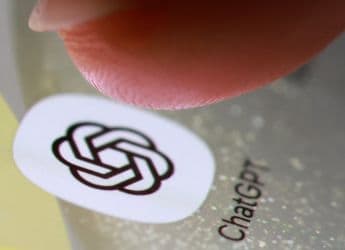- Home
- Smart home
- Smart home Features
- For Amazon’s Alexa, Hindi Is the Way Into Indian Households
For Amazon’s Alexa, Hindi Is the Way Into Indian Households
Amazon is hoping to see increased adoption of Alexa and Echo devices by allowing Indians to talk to Alexa in Hindi.

Photo Credit: Amazon
Alexa can not only understand Hindi but also the colloquial ‘Hinglish'. Inset: Dilip R.S.
Alexa, ek gaana bajao. Alexa, ek Ola book kar do. Alexa, saat baje ka alarm set kar do!
Enabling such voice commands will allow Alexa, Amazon's voice assistant that powers over 100 million smart devices around the world, to truly make its way into the Indian households. At least that's what Amazon is hoping to do with its recently announced introduction of Hindi support for Alexa.
Alexa made its India debut just over two years ago with support for English (India), however, in a country where English is still a predominantly urban language, gaining significant traction requires adopting the more popular languages like Hindi. As per the 2001 census data, 528 million Indians speak Hindi as their first language with another 139 million counting it as their second language. As a comparison, English is the first language for just 256,000 people, and the second language for 83 million people, though it's obviously spoken and understood by many more across the country.
“From day one while we launched the English (India) model because we had different English variants, we were always cognisant that in India, English is not the primary language for a lot of people,” Dilip R. S., Country Manager, Alexa Skills & Voice Services, Amazon India tells Gadgets 360. “The local languages, including Hindi are going to be what will make Alexa more accessible to customers.”
“We were always working on a lot of things to make [Alexa] regional specific. So, the Hindi [support] has been in the works for some time and we felt at this juncture we were confident that the experience that we put out is good enough for customers to love Alexa,” he adds.
It isn't just the Hindi support that Amazon has added to Alexa. The company recognised that not everyone is speaking pure Hindi, Hinglish usage is very common, and that will impact how a so-called Hindi speaker interacts with Alexa. So, the company also brought support for Hinglish.
“If you look at the way the [Hindi language] model has been built it's not just a pure Hindi experience, it's the way customers naturally end up speaking, even to each other, what we call Hinglish,” Dilip explains. “If you say Alexa, alarm set karo, in that 'alarm' and 'set' are English words but 'karo' is a Hindi word. But, if you ask somebody, he will say – haan, wo Hindi main baat kar raha hai (yes, he is speaking in Hindi). That's the way Indians speak in Hindi to a large extent and that's why Alexa can speak and understand shudh (pure) Hindi, it also supports the Hinglish variant.”
Hindi and Hinglish support not only break the language barrier for Alexa and open a whole new set of consumers who don't speak English or are not comfortable doing so, it will also allow the company to get customers from tier-II and tier-III cities where Hindi and other Indic languages are dominant. Getting customers from smaller towns and cities is going to be very important for the company, given smart speakers are still a niche product, with most of the uptake limited to early adopters and urban customers.
IDC's Monthly Smart Speaker Device Tracker reported in March that a total of 753,000 units were shipped in the country last year, with Amazon leading the market with a 59 percent share, followed by Google with 38 percent. Growing this sub-million number into something substantial can't happen by just being dependent on English-language speakers or metropolitan cities.
Massive opportunity
With features like this and more, tech companies like Amazon are contesting to grab a pie of India's growing Internet population and the largely untapped part of the population that still has to make its way online. The tech giants are hoping that the massive opportunity in India will drive the next decade (or more) of growth for them as the US and other western markets near the saturation point.
As per a recently released report from Internet and Mobile Association of India and Neilsen, there are 451 million Internet users in the country, out of a total of over 1.35 billion people. Converting a large chunk of these people into one's consumers requires support for vernacular. While it has just been over a year since Amazon really got into the Indic language game by launching the Hindi version of its website and app, Google has long realised the important of vernacular support. A large number of the platforms offered by the Mountain View, California-based company already offer support for Hindi and other Indic languages.
The search giant organised the latest iteration of its Google for India just a day after Alexa Hindi support announcement and revealed that Hindi has already become the second-most used language on Google Assistant globally. Google is also bringing Hindi support in Assistant to Android TVs, a feature still missing from Alexa in Fire TV devices. The company also added support for multilingual mode, where the Assistant users can just tell it on their smartphone to talk to them in one of the supported languages, including Hindi, while having English or another language as their phone's default language.
While Google's multilingual support is yet to reach its smart speakers, Amazon announced a similar feature for Alexa just days after the Hindi announcement. Amazon's multilingual mode is limited at this point, with only three language pairs supported, including English and Hindi, however it is more seamless and doesn't require telling Alexa that you want to speak in Hindi or English. It will just understand both and respond in the same. Amazon says it will start rolling out multilingual mode this month, however an exact date is unavailable at this point.
With Hindi and Hinglish support as well as upcoming multilingual mode, Alexa suddenly has the capabilities required to cater to a large segment of consumers in India. The company is unlikely to stop there, and it says that learnings from adding Hindi support will make future additions easier.
Alexa Skills
Even though the core Alexa functionalities are now available in Hindi and a selection of over 500 Hindi skills have been available to the Hindi users from day-one of the Hindi support, the company will need developers to step up and build more Hindi experiences for Alexa users to keep them hooked to the platform. Similar to how third-party apps played a key role in success of iOS and Android as smartphone platforms, third-party skill developers have a vital part in the overall success of Alexa as a platform. Amazon says it has been working with developers to educate them on how to create good Hindi skills. The same machinery that has been pushing Indian developers to build English skills until now will now be used to push for Hindi skill development.
“We had the developer portal open about two and a half months back,” Dilip says. “So, the objective was to build a good enough selection on first day of launch. If the customers use Hindi, they should not be like are kuch nahin hai (there is nothing here). They have the basic use cases addressed. We have been spending a lot of time educating these developers, training them.”
“So, all the efforts that we have been doing for English, will be replicated for Hindi as well. Hackathons, webinars, education sessions, office hours. We have put a lot of training material out there on how to build a good Hindi skill. So, that's why in two and a half months, we already have 6,000 developers who started building for Hindi. We are confident that this 500 number will only keep on increasing in a fast pace.”
Amazon may have thousands of developers working on Hindi skills but getting quality skills that have real use-cases or solve real problems in Hindi for the consumers is going to be a big task. The company still doesn't offer in-skill monetisation as an option in the country. So, the developers are either dependent on Alexa Developers Rewards or not so user-friendly ways that require a user to go out of the Amazon ecosystem and pay for subscriptions. The developers who are already building skills for Alexa also face issues with skill discovery.
“When we launched December first week, I wanted 100 users in the first week and it was not an easy thing,” Shreedhar Vepencheri, co-founder, Oyku, tells Gadgets 360. Oyku has three published skills in the Alexa store - Story Stream, Wild Planet, and Music World.
“100 was not a big target, that's not a big number to aim for. I know how difficult it was, joining Facebook and all, you can only spam so many people. I got banned from Reddit a couple of times. What we did was contact tech bloggers to review Story Stream, they were already writing about voice tech,” Vepencheri adds.
Oyku, however, is hopeful that some of the changes that Amazon has made in the recent times, including rating requests, will solve some of the discovery issues.
Future is “Alexa everywhere”
With Alexa, Amazon has long bet on voice as the next big thing. The company dropped the ball with smartphones and its heavily subsidised Fire tablets don't contribute enough to make a dent in the company's bottom line. It is now hoping that voice will emerge as a platform that will become ubiquitous, like the smartphones.
The company thinks voice can revolutionise how we interact with devices, especially in a country like India, where a significant chunk of the population is yet to experience Internet and when they come to the Web they won't be as online literate or savvy as the existing users. The ease of use is going to be a key factor in onboarding them. Something Amazon wants to solve with voice and conversational computing.
“People are ready for voice when they can start speaking. I have a two-year-old daughter at home, she is ready for voice because she can start speaking and it's not a technology for her, it is communication, conversation,” Amazon's Dilip says. “So, for her, it's just a device, she had grown up with this and she is going to ask – Alexa do this, do that and Alexa will do it. She is super comfortable and may be with regional languages and maybe in Hindi as the start, it makes it even more comfortable.”
“[The customers] don't have to learn a new technology, they don't have to learn a new operating system to operate it. They just have to speak to it, as naturally as they have always been speaking and it should work seamlessly.”
For Amazon, Alexa and its voice ambitions don't seem to be just about generating a new revenue stream, they are far bigger. The company wants Alexa everywhere. It wants Alexa to become an intrinsic part of our lives, something that we can't live without. Something like smartphones that have, over the last decade or so, become so much more than just a device to call or message. It believes with the help of an ecosystem of device manufacturers and skill developers; it might just be able to do that.
“Today, you have speaker companies replicating, sort of an Echo experience, but we also have them taking it to the devices on-the-go – building earphones, building headphones, around voice with Alexa integrated,” says Dilip. “Building portable speakers, building laptops, TVs.”
“So, suddenly Alexa is [at] more than one place. It's not just in your bedroom, by the side table. It is also in your car. It is also on-the-go. Suddenly, the customer is used to speaking to Alexa everywhere,” he signs off.
Catch the latest from the Consumer Electronics Show on Gadgets 360, at our CES 2026 hub.
Related Stories
- Samsung Galaxy Unpacked 2025
- ChatGPT
- Redmi Note 14 Pro+
- iPhone 16
- Apple Vision Pro
- Oneplus 12
- OnePlus Nord CE 3 Lite 5G
- iPhone 13
- Xiaomi 14 Pro
- Oppo Find N3
- Tecno Spark Go (2023)
- Realme V30
- Best Phones Under 25000
- Samsung Galaxy S24 Series
- Cryptocurrency
- iQoo 12
- Samsung Galaxy S24 Ultra
- Giottus
- Samsung Galaxy Z Flip 5
- Apple 'Scary Fast'
- Housefull 5
- GoPro Hero 12 Black Review
- Invincible Season 2
- JioGlass
- HD Ready TV
- Laptop Under 50000
- Smartwatch Under 10000
- Latest Mobile Phones
- Compare Phones
- iQOO Z11 Turbo
- OPPO A6c
- Samsung Galaxy A07 5G
- Vivo Y500i
- OnePlus Turbo 6V
- OnePlus Turbo 6
- Itel Zeno 20 Max
- OPPO Reno 15 Pro Mini 5G
- Lenovo Yoga Slim 7x (2025)
- Lenovo Yoga Slim 7a
- Realme Pad 3
- OPPO Pad Air 5
- Garmin Quatix 8 Pro
- NoiseFit Pro 6R
- Haier H5E Series
- Acerpure Nitro Z Series 100-inch QLED TV
- Asus ROG Ally
- Nintendo Switch Lite
- Haier 1.6 Ton 5 Star Inverter Split AC (HSU19G-MZAID5BN-INV)
- Haier 1.6 Ton 5 Star Inverter Split AC (HSU19G-MZAIM5BN-INV)

















